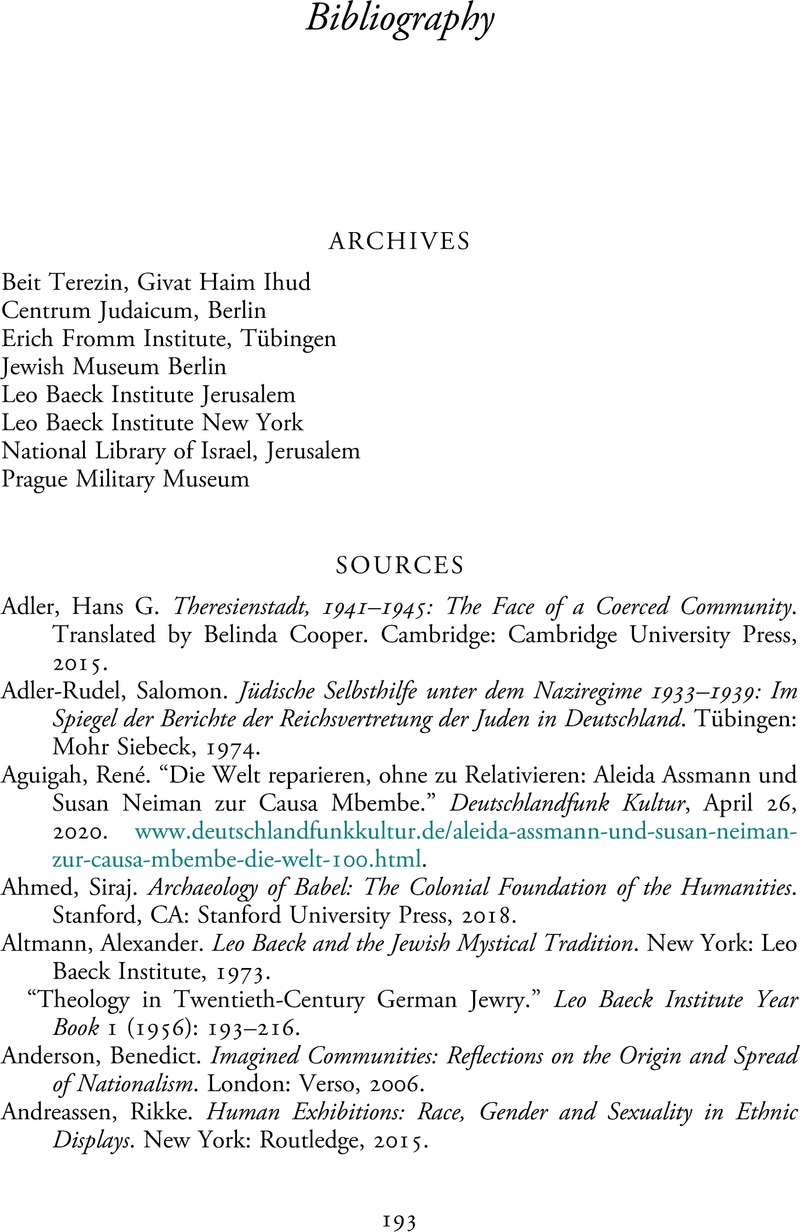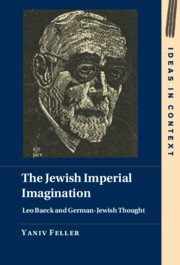Book contents
- The Jewish Imperial Imagination
- Ideas in Context
- The Jewish Imperial Imagination
- Copyright page
- Contents
- Acknowledgments
- Introduction
- Chapter 1 Under the Aegis of Empire
- Chapter 2 Saving Christianity from Itself
- Chapter 3 Vulnerable Existence
- Chapter 4 Forced Labor
- Chapter 5 Seeking Hope
- Chapter 6 Cold War Judaism
- Epilogue
- Bibliography
- Index
- References
Bibliography
Published online by Cambridge University Press: 08 November 2023
- The Jewish Imperial Imagination
- Ideas in Context
- The Jewish Imperial Imagination
- Copyright page
- Contents
- Acknowledgments
- Introduction
- Chapter 1 Under the Aegis of Empire
- Chapter 2 Saving Christianity from Itself
- Chapter 3 Vulnerable Existence
- Chapter 4 Forced Labor
- Chapter 5 Seeking Hope
- Chapter 6 Cold War Judaism
- Epilogue
- Bibliography
- Index
- References
Summary

- Type
- Chapter
- Information
- The Jewish Imperial ImaginationLeo Baeck and German-Jewish Thought, pp. 193 - 227Publisher: Cambridge University PressPrint publication year: 2023



